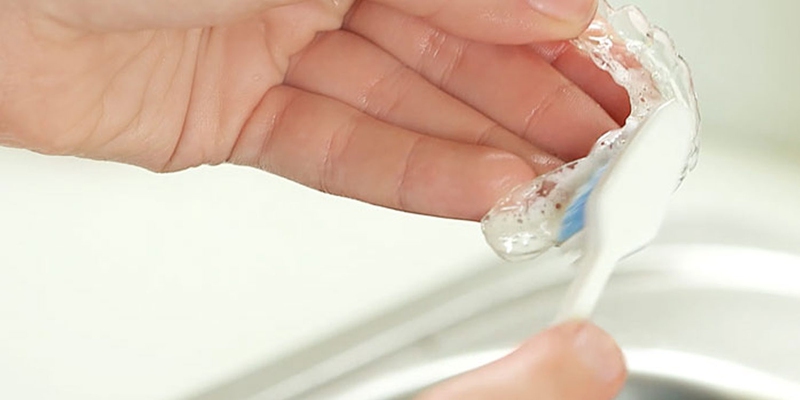A mouthguard is a piece of sporting equipment that is used in impact sports to protect one’s teeth and gums from injury or it can be worn by people to protect against teeth grinding at night. Mouth guards are essential to many athletes to ensure that their teeth and gums remain safe whilst training and competing, as well as individuals who suffer from bruxism (teeth grinding). Whilst it is important to protect one’s teeth and gums, it is equally important to ensure that one’s mouthguard is cleaned properly after use to ensure proper hygiene is maintained. This article will detail how to clean your mouthguard, as well as offer more useful information on the use of a mouthguard.

How to Clean Mouth Guard
The Wrong Way
Simply running the mouthguard under water is not a sufficient method of cleaning the equipment. Whilst you should run it under water immediately after use to remove debris, this will be ineffective in removing bacteria and be a completely waste of time in regards to achieving a clean mouthpiece, if you do not also apply other methods of cleaning. To ensure that you clean your mouthguard correctly, follow the tips below.
The Right Way
After every use, you should run your mouthpiece under warm water to remove any debris that may remain in the mouthguard. When ascertaining how to clean mouthguard, it is important to fully clean your equipment to ensure proper hygiene and avoid unnecessary occurrences.
You must next use a toothbrush to once again cleanse it and remove any more stubborn debris that may remain on there. Simply use your normal toothbrush to lightly go over your mouthguard, or a separate toothbrush if you'd prefer not to use your normal everyday one. Whilst some use toothpaste when cleaning mouthguard, it should be noted that this may cause damage to the equipment due to the abrasive nature of some toothpastes, meaning that you may have to replace your mouthguard sooner than you might have hoped. Once your mouthguard has been washed and scrubbed, it is important to let it air-dry completely before continuing to store it safely, this will prevent the rapid growth of bacteria that may occur from storing your equipment whilst it is still wet or damp. To ensure all bacteria is removed regularly, it is also important to deep clean your mouthguard at least once a week. This is an easy process that can be achieved by following the method below.
Deep Cleansing for Best Results
When ascertaining how to clean mouthguard, deep cleansing is as important if not more important than regular washing. This can be done easily using one of three ways:
1. Use a mouthpiece cleanser that can be purchased over the counter. Simply put your mouthguard into a bowl or glass of clean water and add the cleansing solution, allowing it to dissolve completely. The cleansing product you purchase will likely come with instructions of use, so be sure to follow them closely.
2. Use a mixture of mouthwash and water. Put around a cap full of mouthwash into a clean bowl of water and submerge your mouthguard within it. Allow your mouthpiece thirty minutes to soak in the solution before removing it and allowing it to dry.
3. The third method of deep cleansing involves the use of vinegar and hydrogen peroxide. First, soak your mouthpiece for around thirty minutes within distilled white vinegar, then wash the vinegar off by soaking the mouthguard in a bowl of clean water. Next, repeat the process but this time soak your mouthguard for thirty minutes in hydrogen peroxide, then rinse once again with water, and allow to dry.
More Things to Consider
When learning how to clean mouth guard, there are more things to consider to ensure the process is carried out correctly. Below are further things to consider when caring for your mouthguard:
Allow it to dry on a hard flat surface, this will ensure all moisture drains sufficiently and it drys completely.
Ensure to store your mouthguard correctly, if you are not using your mouthguard, it should always be stored in a protective case (assuming it has been washed sufficiently).
You should also ensure that your case is clean, as if it is not, it will make the cleaning of your mouthpiece pointless as it will only become unclean again when you store it in its case. Simply wash the case several times a week using normal washing up liquid.
Check your mouthguard for wear and tear and know when the purchase of a new one is required.
View All Comments /Add Comment